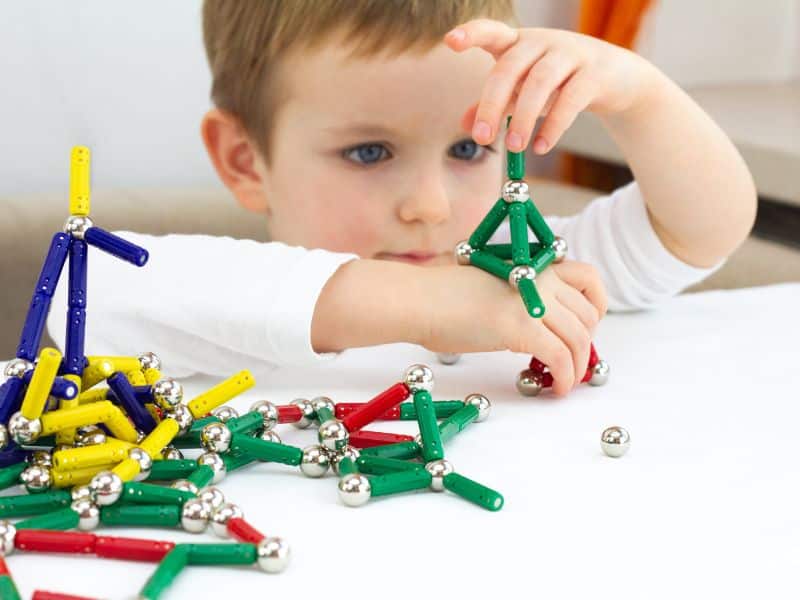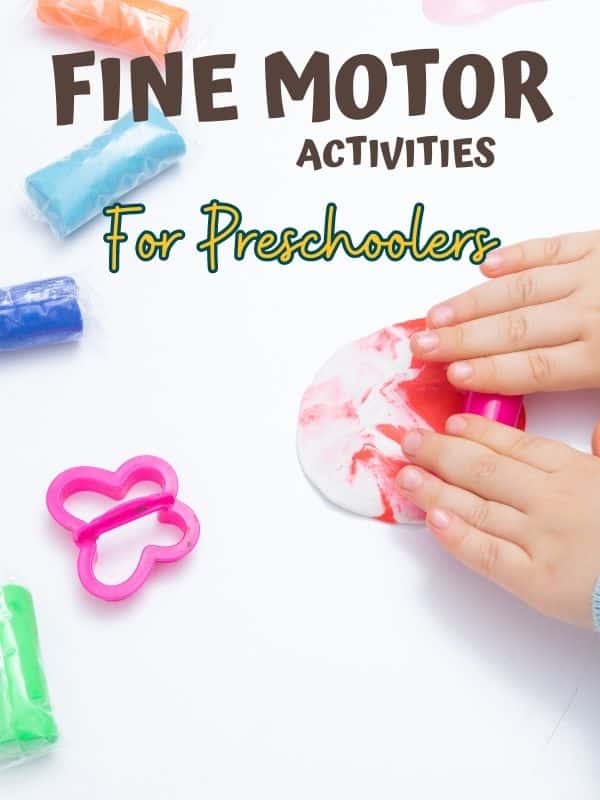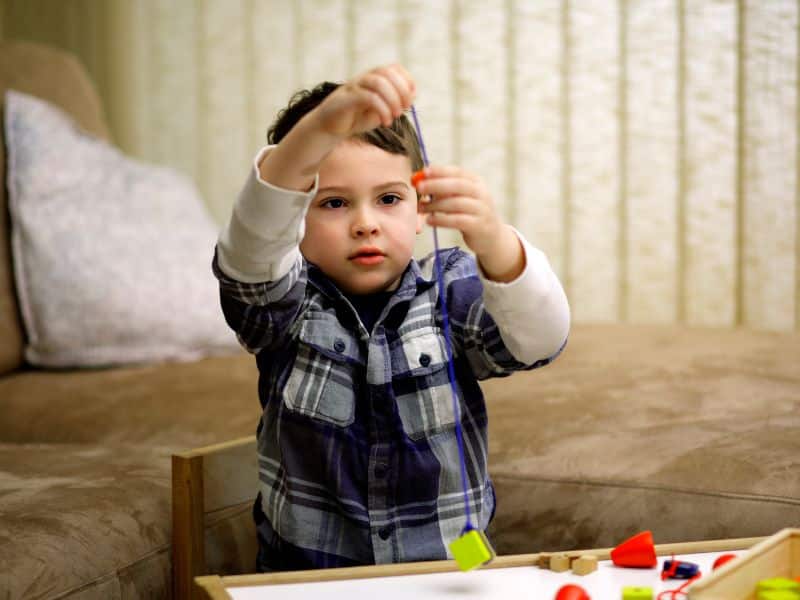Early Childhood Development
Last modified on December 24th, 2024
Tiny hands and big achievements! Yes. Kids’ tiny fingers and small wrists can do wonders with the right guidance from parents. We call them fine motor skills.
The article today focuses on fun and easy fine motor activities for preschoolers.

Fine motor skills involve the ability to control small muscles in our hands and wrists.
For example, we use these skills when we draw, paint, cut with a scissor or tie a shoelace.
Though they sound like pretty easy tasks for us grown-ups, it’s not the same for young kids who still have a growing body.
That is exactly why they need continuous exercise for those muscles, practice and guidance to improve this skill.
Why are fine motor skills important for preschoolers?
In simple terms, if a child’s fine motor skills are not improved according to their age, at school they may struggle with writing, drawing and self-help and it can be a big blow to their self-esteem.
Examples of fine motor skill milestones in preschoolers
A child’s fine motor skills have been improving since birth. By their pre-school age (3- 5 years) they need to have some basic fine motor skills as listed below.
Your child may do these a bit sooner or a bit later. So let’s look at it keeping in mind that every child has his/her own pace.
Your preschooler(3-5 years) can,
Hand-eye coordination is the coordinated motor control of eye movement with hand movement requiring our hand and eye to act simultaneously.
Ex: When hitting a ball in a game of cricket, catch a ball.
This is an essential skill for children to do well in academics, play and self-care.
As they get better at coordinating the movement of their hands with their eyes, they will get better at writing, drawing, playing and basic day-to-day work.
Find more about hand eye coordinating activities
Writing and drawing play a big role in children’s school lives. With dextrous hands and wrists, they are going to be really good at controlling and manoeuvring the pens, brushes, pencils and crayons.
Find about benefits of drawing
When they have self-help skills like brushing their teeth, tying shoelaces, combing their hair, and putting on clothes, it will be a huge confidence boost for them.
Not to mention how it strengthens the children’s sense of independence.
A child with good fine motor skills can do a variety of games and activities. Playing with Legos, puzzles, or playdough are some of them.
All these activities improve children’s thinking, problem-solving, and attention span.
Learn about cognitive development activities for kids

Playdough is such a fun activity for kids. They strengthen their hand muscles by trying to shape, roll and cut play dough shapes.
To make this activity more interesting, give them cookie cutters, knives, bottle lids, sea shells, buttons and whatever little objects may help them be creative.
Find out more about play dough and how to make the most of it.

Puzzles are a great way to improve children’s fine motor skills. For toddlers, you can offer simple puzzles with a few large pieces. As they grow up, it can be a bigger puzzle with many little pieces.
As the children grab these pieces and connect them to the puzzle, they need to control their muscles and place them accordingly. This improves their fine motor skills and hand-eye coordination.
The same way, playing with building blocks, Lego and construction sets also helps them control their wrists and fingers.
Children can start stacking up and making towers, and as they get older they can create more complex structures using tiny pieces of blocks, which may take careful manoeuvring.
Wind-up toys are a lot of fun, and it takes strong fingers to twist that little dial for all the speedy excitement!
The action of winding the toy helps strengthen hand muscles and improves grip.

These bath games are also super fun.
Refill an old shampoo bottle and squeeze it until it’s empty. Alternatively, use some fun water squeeze toys to spray water around!

Painting and drawing are activities that children should be doing every day.
We can add variety to the activity using different materials like crayons, water colours, oil pastels, acrylic paint, chalk and colour pencils and children can use different sized paint brushes, fingers, hands, leaves, twigs, tooth brushes, halved fruits like lemon to create art.
All these require different kinds of control by their hands, which is a great learning experience for them. Not to mention, it is a wonderful place for the free expression of art.

Beading and treading activities require kids to insert a thread through a hole.
For smaller kids you can give them bigger beads with bigger holes. As they get better and better at it, offer smaller beads with smaller holes.
Using a punch, make holes in cardboard and encourage your child to thread using a shoelace.
![]()
Learning to cut scissors gives a lot of exercise to their little hands.
Encourage cutting straight lines, curves, circles and then as they improve they can cut different shapes.
Download some scissor practice worksheets

Children can do sensory play with sand, rice, beans or mud and make castles, cakes by moulding them using their hands. They can sort similar-colored beans, glue them on papers and do art and crafts.
Mixing mud, moulding them into shapes or sorting beans require them to control their hands and wrists.
These are ideal activities to train their little hands to write, draw and paint.

Let children pick up small items from a sensory bin or sort craft pom poms using a pair of tongs.
Find more pom pom activities for preschoolers.
Try to include at least one fine motor skills activity a day. These are ideal as quiet-time activities as well.
Giving them the opportunity to use their fingers and hands for grabbing, picking, cutting, pasting, mixing and drawing strengthens the small muscles around their wrists and fingers for better control.
For toddlers, chunky chalk and crayons, are better building blocks for easy grabbing and manoeuvring.
Sensory play with mud, sand and rocks with different textures can improve a toddler’s fine motor skills as well.
For preschoolers you can introduce a bit more complex activities like threading, legos with smaller parts, cutting shapes using scissors, painting using different shaped and sized brushes and so on.
Letting our kids play freely and independently can improve their fine motor skills in many ways. Playing with sand , mud, blocks, scissors, glue, yarn, beads can improve their creativity while developing their fine motor skills.
Finally, don’t forget to appreciate their effort and understand that developing good fine motor skills is a long-term process.
As you all know now, fine motor activities can help your toddler and preschooler in so many ways.
As your child starts school, writing is a must-have skill and the fine motor skills mentioned in this article are ideal steps to take before teaching them to write.
Yes, Their tiny fingers and small hands can amaze you real soon as they do fun activities every day.
Share your thoughts with us 🙂
Copyright © 2025 Home Made Legacy · Theme by 17th Avenue
Leave a Reply